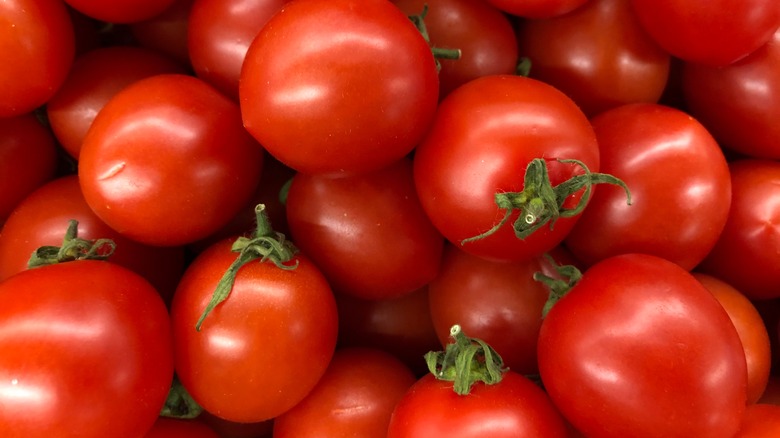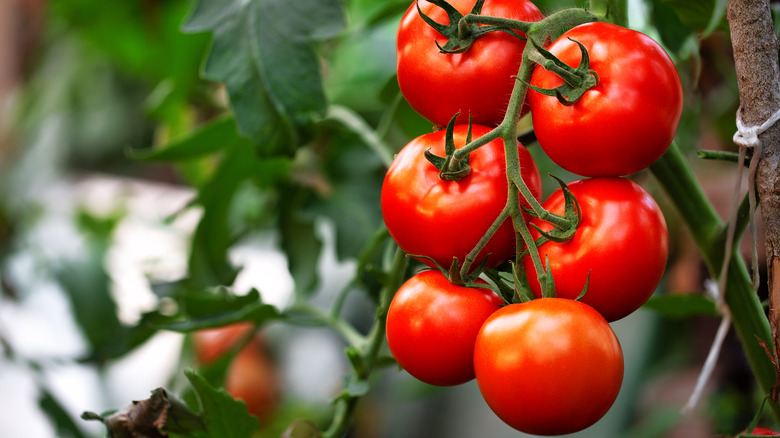Why Tomatoes Were Once Thought Of As Poisonous
It's hard to think of any produce item more versatile than a tomato. Whether put to use in a pasta sauce, in stews such as ratatouille, in salads like a Caprese, or layered onto a sandwich, this humble, readily available (savory) fruit is a standby for most people who love to cook. With a balance of sweetness and acidity (via Bonnie Plants) and a texture that takes well to cooking or eating raw, it's not hard to understand why many cooks and gardeners store tomatoes by the bushelful.
A reliable favorite among eaters today — in 2019, the New York Post reported 89% of respondents to a VeggieTracker.com survey of their preferred vegetables ranked the tomato as their top choice (it's biologically a fruit, but we're not here to nitpick) — these ruby beauties didn't always provoke excitement or even trust. In fact, tomatoes inspired fear and dread for almost 200 years.
18th century Europe mistrusted the tomato
Here's a little primer on the history of the tomato. According to Smithsonian Magazine, the fruit is native to Mesoamerica, and its seeds were introduced to Europe by Spanish conquistadors returning home in the early 16th century. Initially grown only as an ornamental plant, tomatoes weren't eaten in Europe until the late 1700s. That's because, according to Smithsonian, tomatoes belong to the nightshade family of plants, some of which are deadly — and Europeans weren't keen to eat any nightshades, even though it's only the leaves and stalks of the plant, and not the fruit, that are poisonous.
Eventually, though, Europeans succumbed to the tomato's wiles. Because the fruit was still not widely grown in Europe, it was pretty much only available to aristocrats — some of whom fell sick and died after sampling the mysterious and mistrusted tomato (via Smithsonian). European courts soon nicknamed the tomato the "poison apple," attributing the deaths to meals including the fruit. But, as Smithsonian explains, the fatalities were actually a result of the wealthy class's choice of dinnerware.
Eighteenth century European aristocracy ate off of handsome pewter plates — which happen to be high in lead (via Smithsonian). When tomatoes were served on the plates, the fruits' acidity caused toxic lead to leach from the plates, poisoning some of those who ate from them. Over time, these deaths seem to have been forgotten, especially after the 1880s' invention of pizza in Naples, whose deliciousness helped turn the tide from anti- to pro-tomato (via History Today).

